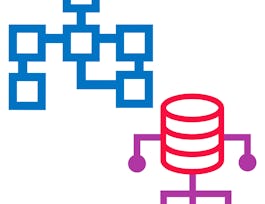In this course, you will understand the practical applications of Building Information Modeling (BIM) with reference to field applications, 4D BIM, and 5D BIM. "Documentation & Common Data Environment (CDE)" covers ISO 19650 standards, including networking (LAN, WAN, cloud computing), CDE concepts, file naming conventions, BIM team roles, and RFI and review processes. "Introduction to 4D BIM/Field BIM" addresses construction scheduling, Gantt charts, and integrates 3D BIM models into 4D modeling with practical demonstrations and workflows for comparing planned versus actual schedules and generating reports. "Application of Field BIM/4D" focuses on collaboration, site utilization planning, 3D control and planning, safety protocols using BIM and CDEs, digital fabrication, scan-to-BIM processes, existing condition modeling, and as-built record models. "Introduction to 5D, AIM" introduces 5D BIM and Asset Information Modeling (AIM), covering quantity takeoff methods, cost breakdowns, COBie, space attributes, and facility management integration for efficient project delivery and asset management. "Beyond BIM - Emerging Trends" explores industrial construction techniques, IoT, Big Data, data analytics, AI, ML applications, and Digital Twin technology, expanding your understanding of cutting-edge BIM applications and trends.



Field BIM
This course is part of Building Smarter: BIM in Practice Specialization

Instructor: Subject Matter Expert
Sponsored by EdgePoint Software
Recommended experience
What you'll learn
"Field BIM" covers BIM applications in construction, CDE importance in BIM, followed by 4D BIM, its preparation, implementation, and applications
The course explores 4D BIM applications like site planning, construction analysis, 3D coordination, and safety, 5D BIM and Asset Information Model
Emerging trends beyond BIM including IoT, Digital Twins, Scan to BIM, Big Data, and AI/ML, highlighting future directions in construction technology
Modules include CDE, 4D/Field BIM intro, practical 4D applications in construction, advanced 4D/BIM uses, 5D BIM, AIM, and emerging BIM trends
Skills you'll gain
- Construction Estimating
- Technical Drawing
- Engineering Drawings
- Project Planning
- Internet Of Things
- Construction Management
- Engineering Plans And Specifications
- Network Infrastructure
- Facility Management and Maintenance
- Project Schedules
- Computer-Aided Design
- Cloud Computing
- Architecture and Construction
- Building Information Modeling
- Scheduling
- Building Design
- 3D Modeling
- Drafting and Engineering Design
- As-Built Drawings
- Architectural Design
Details to know

Add to your LinkedIn profile
6 assignments
August 2024
See how employees at top companies are mastering in-demand skills

Build your subject-matter expertise
- Learn new concepts from industry experts
- Gain a foundational understanding of a subject or tool
- Develop job-relevant skills with hands-on projects
- Earn a shareable career certificate


Earn a career certificate
Add this credential to your LinkedIn profile, resume, or CV
Share it on social media and in your performance review

There are 6 modules in this course
The module "Documentation & Common Data Environment (CDE)" teaches how to manage construction project information effectively. Topics include creating 2D drawings from BIM models, understanding computer network types and cloud computing, and using CDE for information sharing. You'll also learn about file naming conventions, roles and responsibilities in projects, and the Request For Information (RFI) process. This module equips you with essential skills for organized project documentation and efficient data management.
What's included
14 videos1 assignment1 discussion prompt
The module "Introduction to 4D / Field BIM" provides a comprehensive introduction to integrating time and scheduling into Building Information Modeling (BIM) for construction projects. Participants will learn about construction sequencing and project scheduling, including the use and limitations of Gantt charts. The course explores 4D BIM, covering its modeling principles and demonstrating its application through project demos. Participants will gain insights into 4D BIM workflows, comparing planned schedules with actual progress, and generating essential reports for project management and evaluation purposes.
What's included
11 videos1 assignment1 discussion prompt
The module "Application of Field BIM / 4D - Part 1" focuses on practical uses of Building Information Modeling (BIM) and 4D technology in construction projects. Participants will delve into 3D coordination and visual communications across multiple parts, learning how to enhance project clarity and collaboration. The module covers site utilization planning techniques to optimize construction efficiency, supported by detailed construction analysis spanning various aspects and phases. Participants will also explore 3D control and planning methodologies, equipping them with skills to effectively manage and coordinate project activities using advanced BIM tools and strategies
What's included
11 videos1 assignment1 discussion prompt
The module "Application of Field BIM / 4D - Part 2" delves into advanced applications of Building Information Modeling (BIM) and 4D technology in construction management. Participants will explore BIM's role in enhancing safety practices, covering topics such as fall prevention, formwork safety, and electrical hazards. They will also learn about disaster and risk analysis using digital tools, and delve into digital fabrication techniques for construction efficiency. Additionally, the module covers methods for modeling existing conditions, converting scans to BIM models, and creating accurate as-built records, providing a comprehensive understanding of advanced BIM applications in construction projects.
What's included
21 videos1 assignment1 discussion prompt
The module "Introduction to 5D, AIM" introduces participants to the integration of cost estimation and asset information management (AIM) within Building Information Modeling (BIM). It covers fundamental concepts of 5D BIM, focusing on quantity take-off methodologies using various units of measurement and cost analysis techniques. Participants will gain hands-on experience through instructor-led demonstrations and exercises in quantity take-off for different building elements. The module also explores Level of Development (LOD) standards and their role in accurate quantity estimation. Additionally, it addresses cost control strategies through 5D BIM and discusses asset information modeling, COBie standards, space attributes, and information exchange for efficient facility management.
What's included
20 videos1 assignment1 discussion prompt
The module "Beyond BIM, Emerging Trends" explores advanced applications and future directions in the field of Building Information Modeling (BIM). Participants will delve into the industrialization of construction through BIM, focusing on Design for Manufacture and Assembly (DfMA) principles across multiple parts. They will also learn about integrating Internet of Things (IoT) technology with BIM, harnessing big data for informed decision-making, and applying data analytics through AI and machine learning in construction projects. The module introduces concepts of smart infrastructure and the development of digital twins for connected infrastructure, emphasizing their benefits, requirements for success, and diverse applications across industries, particularly in smart cities and national contexts.
What's included
13 videos1 assignment1 discussion prompt
Instructor

Offered by
Why people choose Coursera for their career




Recommended if you're interested in Physical Science and Engineering

SkillUp EdTech

Microsoft

Microsoft

SkillUp EdTech

Open new doors with Coursera Plus
Unlimited access to 10,000+ world-class courses, hands-on projects, and job-ready certificate programs - all included in your subscription
Advance your career with an online degree
Earn a degree from world-class universities - 100% online
Join over 3,400 global companies that choose Coursera for Business
Upskill your employees to excel in the digital economy


